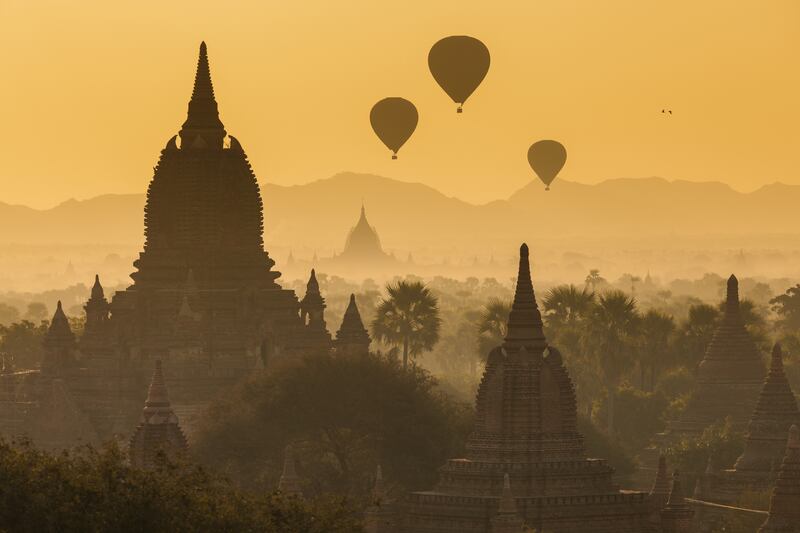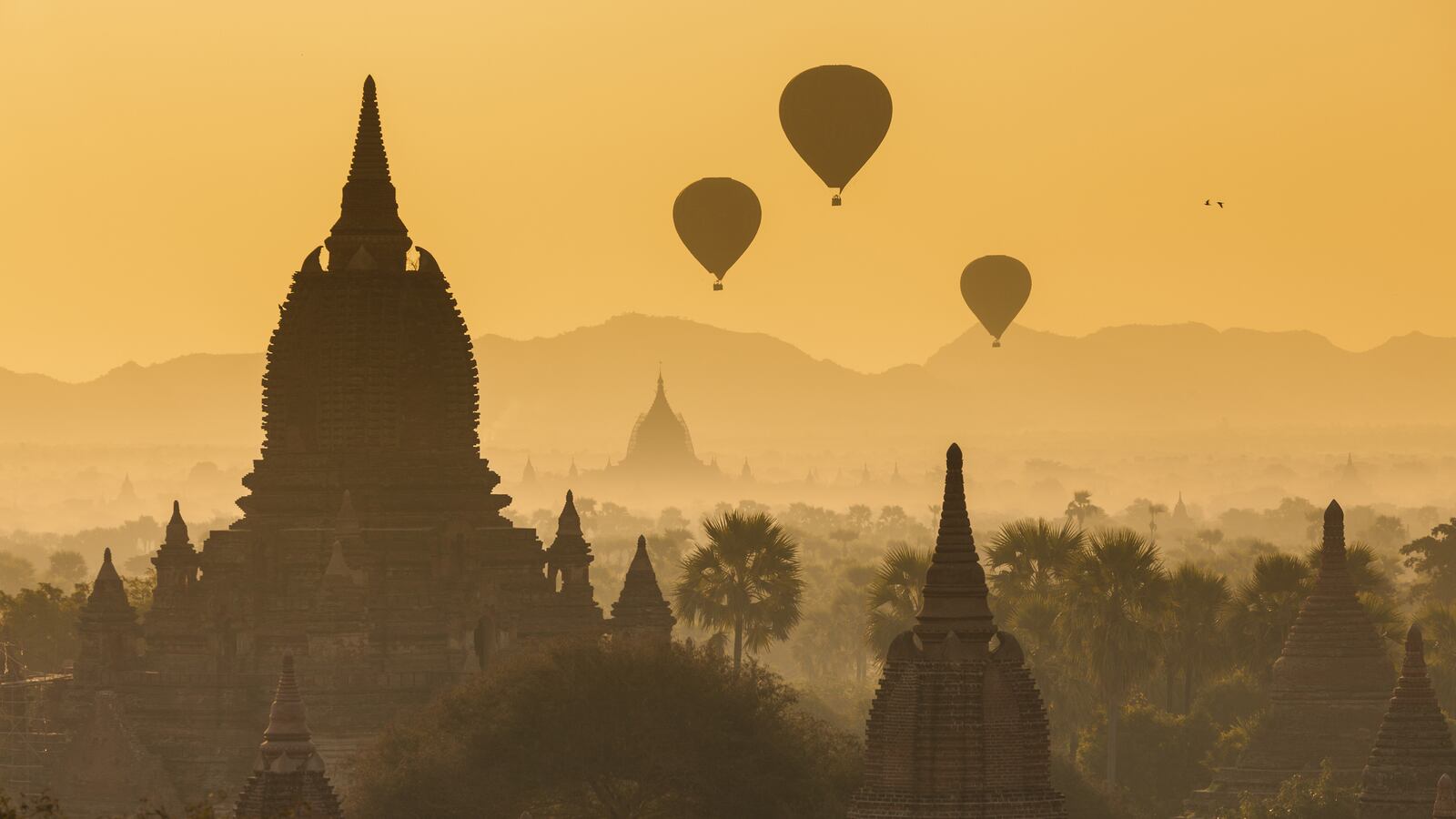In central Burma, a picturesque landscape is the stuff of a photographer's dreams: thousands of peaks spiral upward from 26 miles of flat greenery, framed by the Irrawaddy river and a wall of distant mountains. The ancient city of Bagan stretches as far as the eye can see, with pyramid-stacked red stones, gold domes, and reaching spires of more than 2,200 scattered temples and pagodas comprising the largest collection of Buddhist structures in the world.

After half a century of rule by a military junta that shunned the outside world, Burma’s elections in 2012, plus a recent lifting of international sanctions, have paved the way for long-sought democracy and begun to open up the country. Previously host to only the most intrepid of travelers, Bagan is beginning to attract a new wave of tourists who are taking note of the untouched Asian nation rife with unbeatable scenery—arguably the most beautiful being the mystical, temple-studded region of Bagan.
Originally the capital of the Kingdom of Pagan, the area was once host to between 4,000 and 10,000 temples built between the 11th and 13th centuries. A smitten Marco Polo described it as “a gilded city, alive with tinkling bells and the swishing sounds of monks’ robes,” and declared it “one of the finest sights in the world.” The gild has faded and the metropolis is gone, but monks’ robes still swish through the thousands of structures that remain in one of the world’s greatest archeological sites.
After taking the hour flight from the bustling commercial hub of Yangon, visitors ride horse and buggies, the main means of transportation, through the dusty paths of the sprawling city. An occasional tour bus or motorbike roars through, and, at dusk, hot air balloons drift lazily overhead. Young monks in saffron robes give the area a mystical air, as they make their rounds to offer fresh flowers to the temples’ towering Buddhas as the sun sets behind the pagodas. Elaborate, thousand-year-old murals featuring religious scenes adorn the walls of many temples. Young boys and girls peddling postcards, painted canvasses, and bootlegged books linger outside the more popular temples, serving as ad hoc guides who energetically trail visitors, parroting the professional tours they hear daily and showing off secret nooks and viewing spots.
Though the temples are the country’s top tourist attraction, visitors to Bagan can wander around the looming structures for hours and barely see another soul. As the day draws to a close, buses, horse carts, and motos converge in front of the vertigo-inducing Shwesandaw Paya, one of the tallest structures in the area, to take in the towering view of the sunset, which descends in a spectacular mélange of reds and oranges that silhouette the valley of peaks.
Bagan used to host a small town. But in 1990, residents were suddenly forced to transfer from “Old Bagan” to “New Bagan,” constructed in a peanut field a few miles away. The government sought to make the old city a tourist area, and also possibly wanted to quash pillaging and treasure hunting in the area. Old Bagan, which is nearer to the ruins, is now devoid of inhabitants and only hosts a few sleepy old hotels.
The move occurred right before the 1990 elections, when the party of popular democratic leader and activist Aung San Suu Kyi, known to supporters as “The Lady,” was barred from taking office. A few years ago, at an empty restaurant at the edge of a temple, a former Old Bagan resident theorized they were uprooted two decades prior as revenge for the area’s support of Suu Kyi. “They wanted to punish us,” he said, thoughtfully puffing his cigarette. “We all voted for The Lady.”
The attempt to turn Bagan into a revenue-generating tourist destination has had its downsides. After a shoddy government-led restoration of ancient structures using materials different from the original or by completely rebuilding them; the construction of a massive highway through the site; and the creation of an out-of-place viewing tower and golf course, UNESCO declined to name the region a World Heritage Site in 1996, though the organization has partnered with the city to help with preservation work, and the region remains on the tentative list of those seeking status.
So far, Burma has demonstrated a makeshift method of dealing with modernization and the tourists that are sure to follow. New luxury tours and international hotel plans continue to pop up, but the country only introduced ATMs and credit card machines in 2012, and their adoption has been slow. For now, Burma maintains that rare reputation as an off-the-beaten-path stop—even for the backpacker set. But with wonders like Bagan—a 26-mile, 2,200 temple-strong secret hidden in plain sight—it won't stay that way for long.






